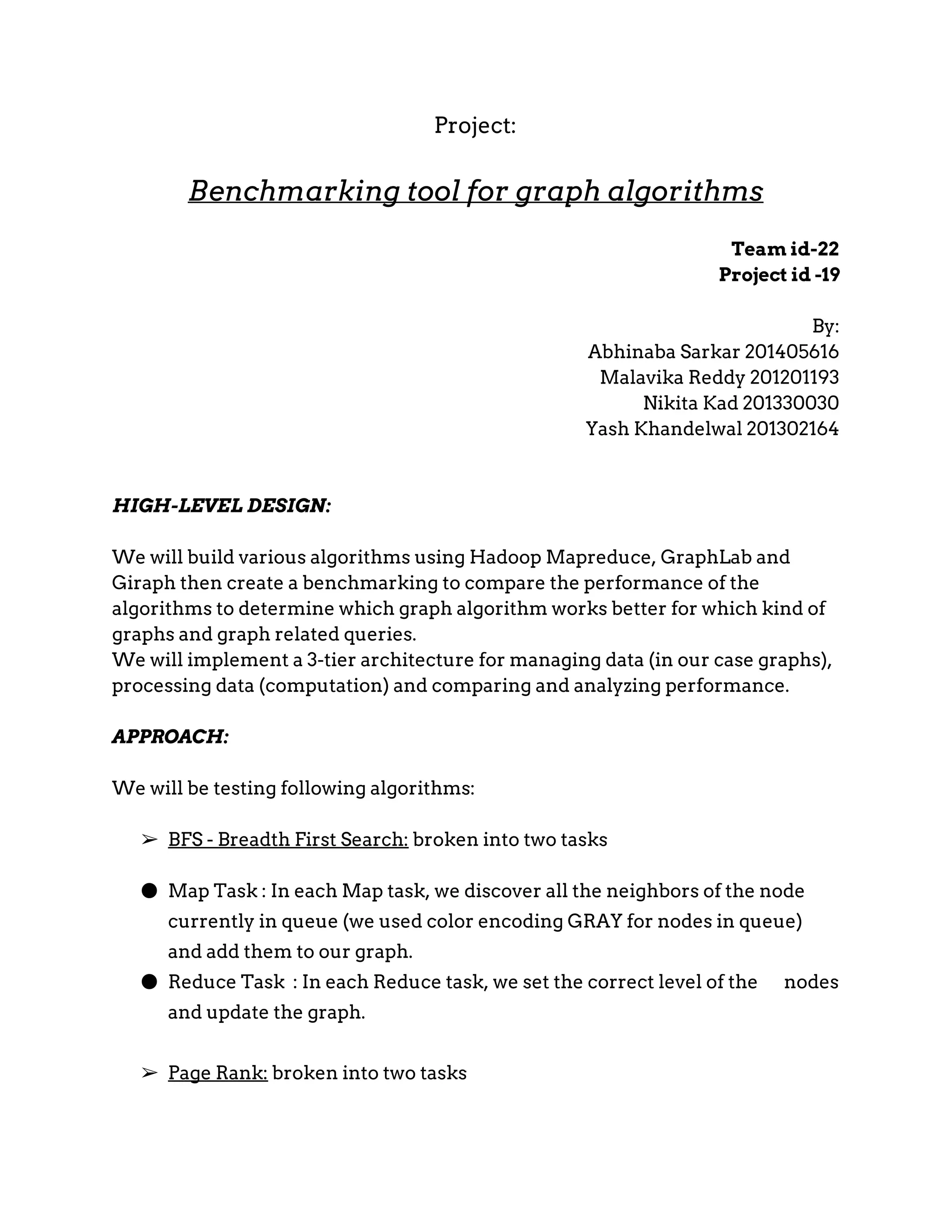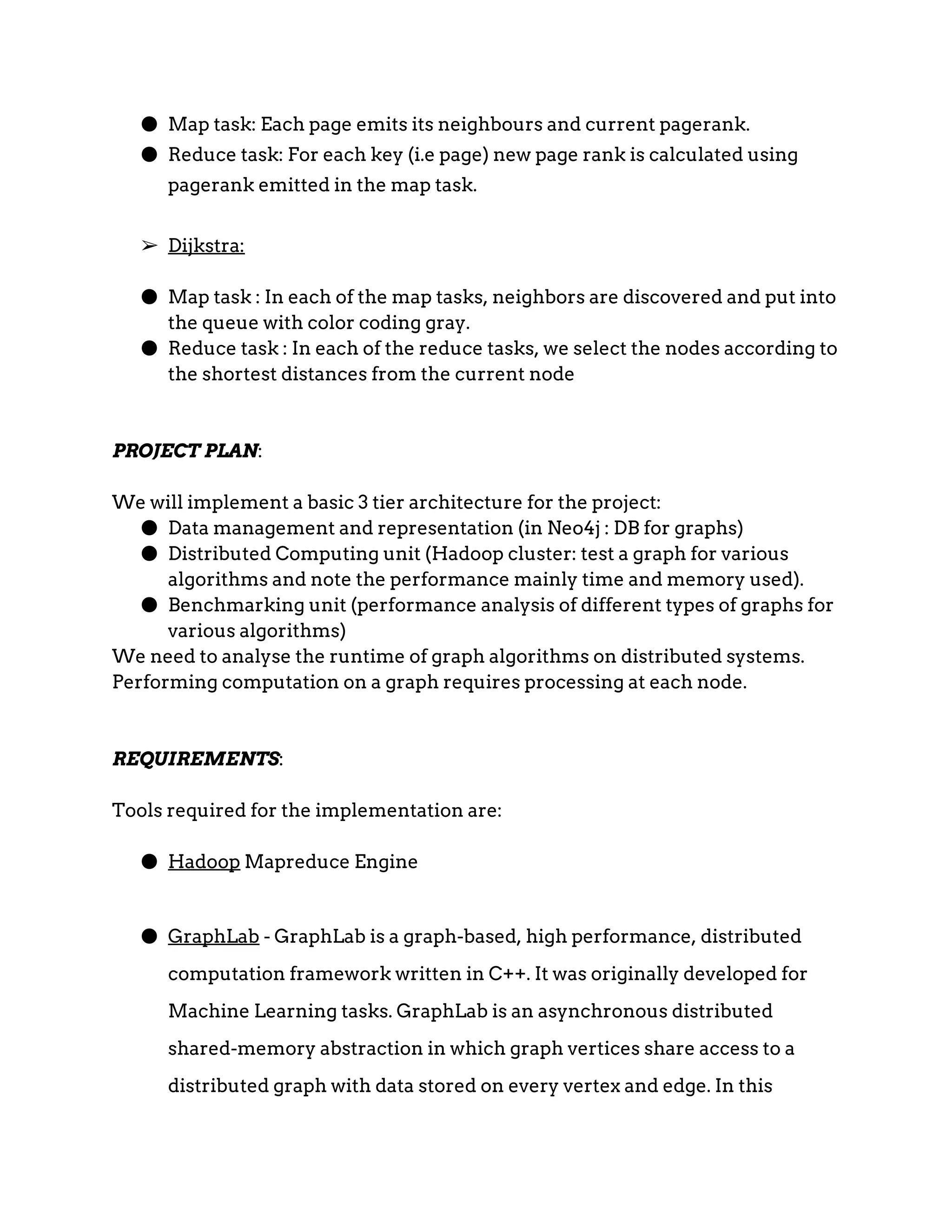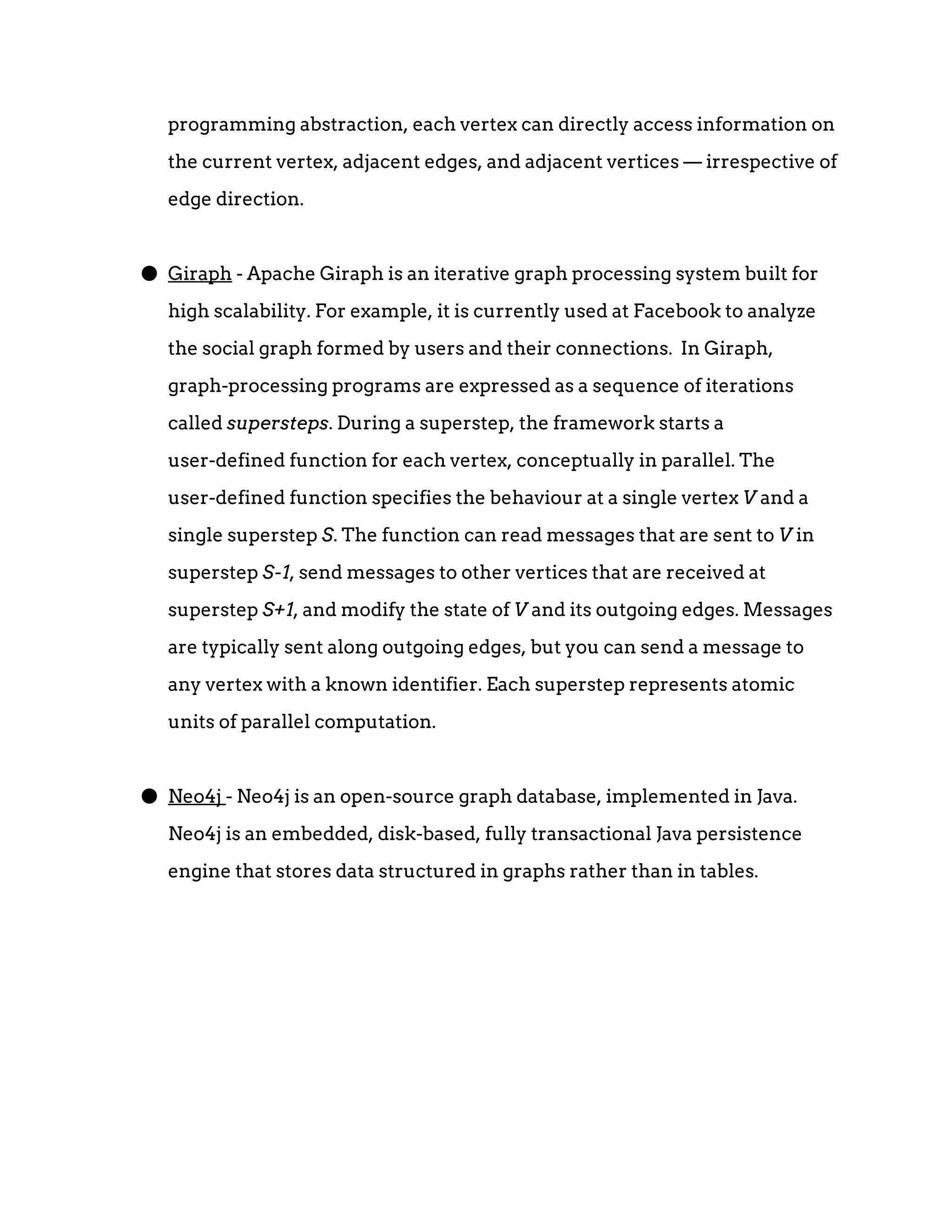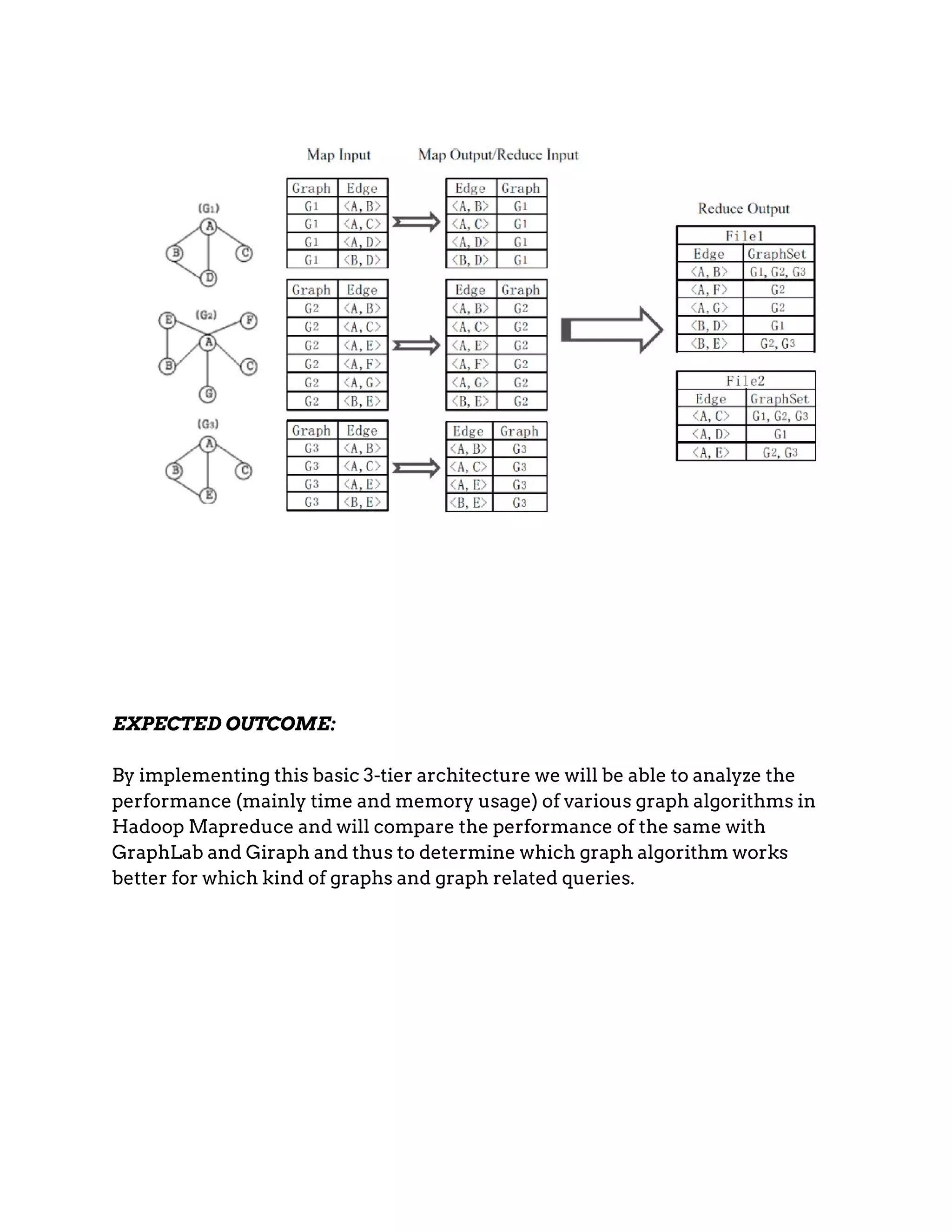The project aims to develop a benchmarking tool for graph algorithms using a 3-tier architecture, leveraging Hadoop MapReduce, GraphLab, and Giraph. Specific algorithms, including BFS, PageRank, and Dijkstra, will be tested to analyze performance in terms of runtime, memory usage, and suitability for different graph types. The anticipated outcome is a comparative performance analysis that identifies the most effective graph algorithms for various scenarios.



